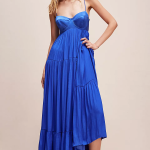
It’s hard not to know about Valheim at the minute: this chilled out, low-poly Viking survival game has been practically taking over Steam over the past few weeks. But if you’re looking to play it yourself, it can be a little overwhelming. Even for survival experts, this games’ take on health, stamina, and hunting is quite different from anything else you will have toiled through.
This guide will walk you through all the basics needed in the early hours of Valheim that the game doesn’t teach you, from time-saving tricks to mechanical breakdowns.
How Food, Stamina, and Health Work In Valheim
When you’re first dropped in Valheim by one of Odin’s Ravens, you’ll only have 25 health. This is your base health, the lowest maximum you can have in the game, and it’ll get you eaten in a couple of hits from even the weakest enemies. You might think that this can be increased with skills points or armour, but that isn’t the case.
Instead, your hit point maximum is affected by your food. In this survival game, the starvation mechanic is tied to your maximum health, not your current health points. So to improve your maximum health, you’ll want to eat something.
At the very beginning of the game, you can find blueberries, mushrooms, and cranberries in the Meadows region. These will be your staple food, each raising your maximum health by DOUBLE CHECK. After you’ve got your bearings, you can begin to hunt deer and boar for meat that increases your maximum health by 40. You can eat up to three different foods at a time (and they have two be different, you can’t fill yourself up on steaks each morning), so you’re able to stack a fair amount of health on top of that starting 25.
But this new health maximum isn’t permanent. It will decrease by a rate of one point every thirty seconds or so. That means the juicy steak will only raise your health pool by 20 after ten minutes. As you are exploring the world, you’ll have to make sure you’re carrying a supply of food to keep snacking on as your health begins to drop. You should also try and eat just before you start a large fight to get the most out of your maximum health.
Stamina works in much the same way. The more food you’ve eaten, the higher your stamina will be. Stamina is used for everything from sprinting, blocking, attacking, and sneaking. Needless to say, having plenty to spare is vital when you venture outside of your stronghold. Keeping a healthy supply of food will make your expeditions into the wilds much manageable, especially as you start to encounter greydwarves, trolls, and skeletons.
Small Houses…
When you first start Valheim, you’ll want to build yourself a homestead pretty quickly. The elements and animals of Valheim can be pretty ruthless so having some walls between you and them is lifesaving. On top of that, beds and workbenches need a roof over them to work properly.
So when you first put down the workbench to begin construction, you might see a great longhouse in your mind, one that would make Odin proud. Keep it in mind, but don’t waste all your time and resources building it just yet. Clusters of small houses are more than adequate for the start of the game. Simply 3×3 square huts will give you enough room to build a bed, workbench and chest.
More advanced buildings take considerable time and effort, with architectural stress and space to consider. In the early stages of the game, you should be focusing on arming and armouring yourself, gathering supplies and getting ready to face the first boss, Eikthyr.
Once you’ve got the basics mastered and you’re looking to further expand your hamlet into a stronghold fortress, check out our guide on building tips and strategies.
… Big Fires
While a small house will go a long way to get you settled nicely, you should make several firepits early on. Cooking raw meat needs a fire pit and a cooking station hung over it, but each station can only cook two lots of meat at a time. Build three or four in a row outside your camp to have a production line of cooking meat. This will greatly speed up how much-cooked meat you can produce at a time, which can be a lifesaver in the field.
When it comes to cooking it, make sure you’re not burning it down to coal accidentally. While you might want some signposts to help you manage your chests or hovels, you’ll mostly want cooked meat for health and stamina.
When you first place some meat over the fire, there will be a pop of sparks and embers. Wait for the same effect to happen again after half a minute or so and quickly remove the meat. If it flashes like that a third time it will have turned to coal. This visual effect is useful for your production line, though, as you’ll see each meat pop as it’s done down the line, letting you know its time to run down and start collecting it all.
Also, be careful around the fires, get to close and you’ll set yourself ablaze. While not too damaging if you have decent health, it can be a hazard if you’re running on empty.
This isn’t Minecraft – Don’t Worry About Mining or Farming at First
On your early adventures, you’ll likely come across tin deposits and carrot seeds, especially if you venture into the Black Forest. You’ll also quickly become aware that you don’t understand how to use these items yet. Don’t fret about them, instead mark the deposits on a map, stick the seeds in a chest of things you’ll need later, and continue hunting.
While mining and farming are staples of the survival genre and normally something you’ll need to get started on right away, Valheim doesn’t work like that. These are instead introduced (slowly) after the first boss, Eikthyr. You’ll have to stick with flint weapons and leather armour at first.
Remember though, you can always upgrade your equipment at the workbench, normally using the same materials used to make it, so it might be worth doing that before the big fight.
Where to find Flint in Valheim
Flint is one of the most important resources early on, as you’ll need to make the tanning equipment to make armour and use it as the pointy end of your best spears and axes. The problem is, the game doesn’t give you any indication as to where to find it.
Luckily, it is pretty easy to find, as its always scattered along coastlines and anywhere where water and land meet. At the beginning of Valheim, you should scout out bodies of water, maybe even building your base or at least a camp near one.
Flint looks similar to stone but will be a lighter, whiter colour, one that’s easy to spot along the coasts. Make sure to check just in the water as well, as they can sometimes spawn underwater.
Don’t Swim, Even After Eating
That being said, swimming is perhaps the most dangerous part of Valheim for beginning players and should be avoided unless the waterway is very narrow or you are very desperate.
The second you begin swimming, the activity will start consuming your stamina at a rate similar to sprinting, without nearly as much speed. Once you’re out of stamina, swimming will start to eat into your health very quickly. If you stop moving the stamina drain stops, but you won’t actually recover any until you are on dry land again.
It can be tempting to try and make for nearby islands or ford over rivers, but its best avoided for beginners. Most rivers will have a narrower section that makes it easier to cross, and if you really want to explore that island on the horizon, maybe invest in a raft to take you there.
Mark The Map
Press M to open your map and scroll out to see how little of Valheim you’ve explored, even after hours of playing. Valheim is an absolutely huge game and in the early stages, you will have no way of navigating it except on your own two feet.
But as you explore the map, you are bound to find many interesting things to remember, from enemy spawn points to dungeons to delve into, to ruins to claim as camps. Make sure you’re not just relying on your own memory to find them again.
Double click on the point to put down a marker to change in the bottom right corner. Once the marker is placed, you can even write a note about what you’ve seen so that you know what to expect when you return.
Valheim even lets you put a cross through the marker by left-clicking it. While it might seem pointless, it clears becomes more useful as you start exploring dungeons and want to note to yourself whether one has been cleared or not. Use these markers as often as possible on everything from trolls to go places to cross a river, and you’ll have a much easier time exploring further and scouting more successfully.
Good luck, Viking, and stay tuned for more guides.
The post Valheim Newcomers, Here’s a Handful of Tips and Tricks from Valhalla by Rosh Kelly appeared first on Wccftech.
Powered by WPeMatico












